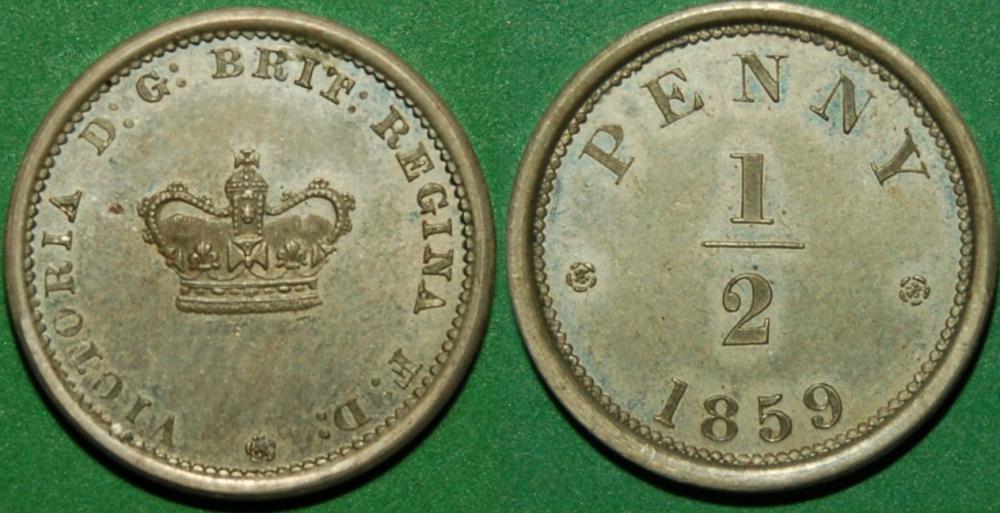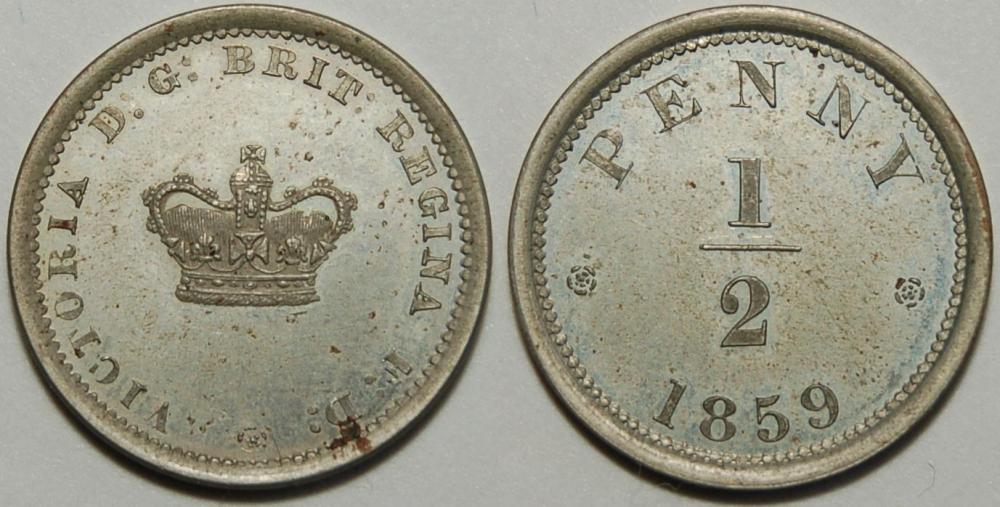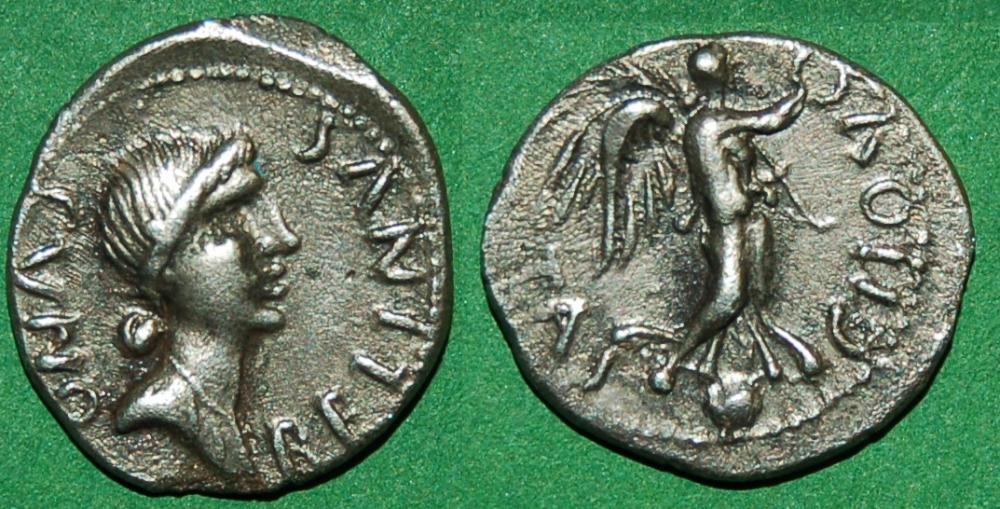-
Posts
12,771 -
Joined
-
Last visited
-
Days Won
343
Content Type
Profiles
Forums
Events
Downloads
Store
Gallery
Articles
Everything posted by Rob
-
The halfpenny is interesting as the reverse die is heavily flawed, presumably to the point of destruction. The illustration in Peck shows no sign of the flaw on this die. Also useful is the chronology you can establish regarding the various pairings. The obverse die is paired with the P2036 & 2037 reverses. Using my P2037 and now disposed of P2036, it is possible to say that the dotted edge P2037 came first because the F at 4 o'clock is intact, whereas on the Plain Edge P2036 it is partly filled as is the case on the museum example. The implication is that they changed dies before varying the collar used. Always good to learn something every day
-
I like these and have one or two representative examples.
-
Which is why my lifestyle is much simpler. I only have to worry whether the coin is attractive or ticks a Hobson's Choice box, and if it suitable for either the collection or for resale, is the price right. There is a huge sense of deja vu with these circular arguments. People seem to fall into one of three camps. 1. Those that blindly follow the TPG view. 2. Those that recognise the system has its shortcomings, but accept them for what they are, and 3. Those that recognise the system has its shortcomings and don't accept the TPG view has any validity.
-
Give me a PM with your details and I can sort out a copy tomorrow night when I am back from the Midland.
-
The problem with common dates is the mintage figures which require dozens of dies in some instances. Used for as long as possible, the end result will be either a totally blocked die or a fractured one. The finer the detail, the easier it is to fill. Couple that with an inevitable small amount of play in the die fixing mechanism and you will have rotational movement which will assist in packing crud into the finer parts of the design - hence you can block serifs with relative ease given the right circumstances.
-
Did you? I think it went for $2200 or $2400. Can't remember which.
-
A few more 1844 farthings
-
You will get small imperfections in any die which may possibly show up sufficient differences between examples to identify them as separate dies. Usually it is flaws or recut letters that give the best evidence. You will need to overlay them. They will be nominally the same dies, but the closer you look the more chance there is of seeing differences. I can see a difference without looking too hard despite your fuzzy image. The B at the start of the reverse legend appears to have a missing upper serif on your example. The same letter on mine has a serif, but as it is the earlier example based on the date, this doesn't mean it is a different die to yours, which could just be a case of die fill as could the missing lower pellet. A missing serif on an 1844 that was present on your 1845 would have to be different dies. Come on folks, bring out your 1844 farthings and help.
-

1937 Proof Set 3d Coins
Rob replied to ozjohn's topic in British Coin Related Discussions & Enquiries
Maundy reverse - ok it's a 4d and the wrong date, but the design is the same. And a G6 currency reverse. Difficult not to spot the difference https://www.rpcoins.co.uk/products/george-v-1927-maundy-fourpence https://www.rpcoins.co.uk/products/00000905 -

1937 Proof Set 3d Coins
Rob replied to ozjohn's topic in British Coin Related Discussions & Enquiries
If they were, they shouldn't have been. The currency 3d has a rose on the reverse -
As Michael said - usually it is due to blocked dies on one or both of the colon dots, though a single pellet can't be entirely ruled out. What is needed is a number of coins struck from the same reverse die showing the gradual infilling of the lower colon dot. As the previous year is the rarest of the copper farthings, it should be relatively easy to pursue this line due to the small number of dies involved. Unfortunately, the 1844 I have in the trays for sale doesn't show any weakness in the bottom pellet, so isn't particularly helpful. I've attached an image of my 1844 if it helps as you can possibly overlay the two images once you have a clear picture of yours. It may or may not be the same reverse die. It isn't the best 1844 in the world, but is at least something to work with. Maybe others could add images of any they have to hand?
-
It doesn't help that AU58 doesn't usually translate to a gEF. You have to be in the 61-64 to have any chance of making good EF, and then (somewhat ironically) it isn't guaranteed. It's just one of those coins which gets overgraded on occasion and consequently will never get taken out of the slab. This phenomenon is a contributor to grade inflation as each overgraded coin bulks out the populations at whatever level.
-
Me too. I thought the LIMA crowns in the last sale were inferior to the one I have too, despite one being graded 80. Mine gets an unambiguous EF for the wear around the ear with brownie points for the toning. Reverse is better, but you can't call it unc with wear.
-
Noted as a variety for 1844 by Bramah (cf. p118, 57a), so possibly one of the earliest obverse dies for 1845 combined with a reverse die still intact at the end of 1844.
-

British error penny on a foreign planchet
Rob replied to will1976's topic in Enquiries about Non British coins
Do it systematically, i.e. start at the beginning, otherwise you will be revisiting old territory. Sod here can guarantee it will be Zambia or Zimbabwe -
Shares the same address as Lukazs in the post above. Entirely coincidental of course.
-

British error penny on a foreign planchet
Rob replied to will1976's topic in Enquiries about Non British coins
A date would help. The picture is too small. 83, 86 or 88? All you have to do is plough through Krause until you find a suitable match. It's a bit tedious, that's all. -
It's alright for some people. Liiving in East Anglia you must be spoilt for choice for both venue, and also what you find. All you will find with a metal detector around here is industrial detritus from the past 250 years.
-

Silver units, Cunbelin
Rob replied to craigy's topic in British Coin Related Discussions & Enquiries
I'd like the top one please. -

Silver units, Cunbelin
Rob replied to craigy's topic in British Coin Related Discussions & Enquiries
This is a pleasant change I'm still looking for a decent AGR, SOLIDV and a bronze with the nearly complete mint signature CAMVL/ODVNO. I do have a winged victory unit. -

!953 frosted proof halfcrown
Rob replied to craigy's topic in British Coin Related Discussions & Enquiries
You can still ask to return it. If you don't then nothing will happen. -
It is unlikely to increase its value because it is not an error as indicated by Nick, but that doesn't mean you won't be able to find someone on eBay with more money than sense who will be willing to pay over the odds.
-

!953 frosted proof halfcrown
Rob replied to craigy's topic in British Coin Related Discussions & Enquiries
Ask for your money back. Any dealer worth their salt will offer a no-quibble returns. You can say 7 days, but if it is fundamentally mis-described then that period goes out the window. If a coin is a forgery, then you have to unpick the traded history of the coin until eventually someone is left holding it. -
It is a medal. Quite legitimate, but I don't have a copy of MI to give you a reference
- 1 reply
-
- 1838
- coronation
-
(and 1 more)
Tagged with:





